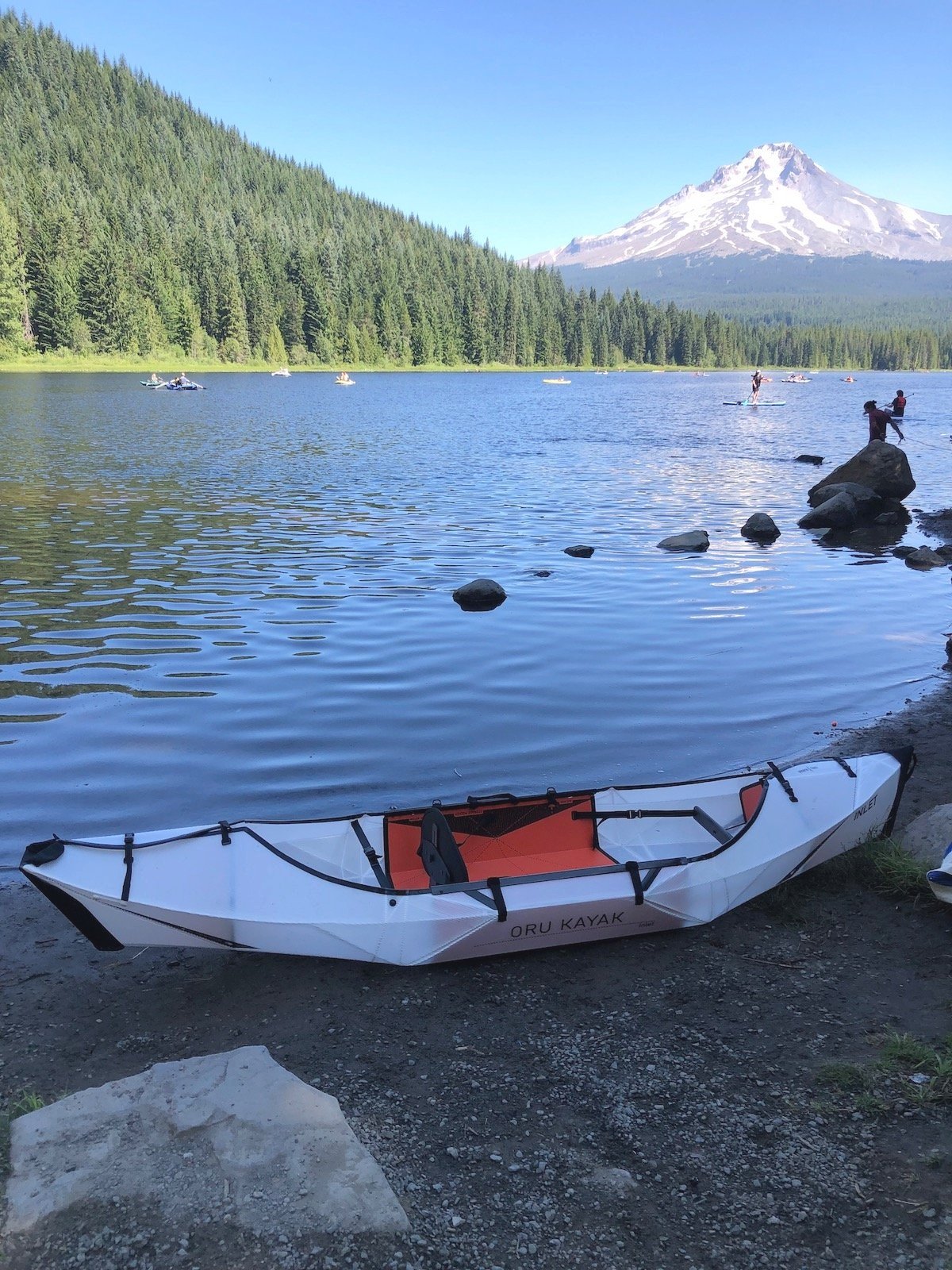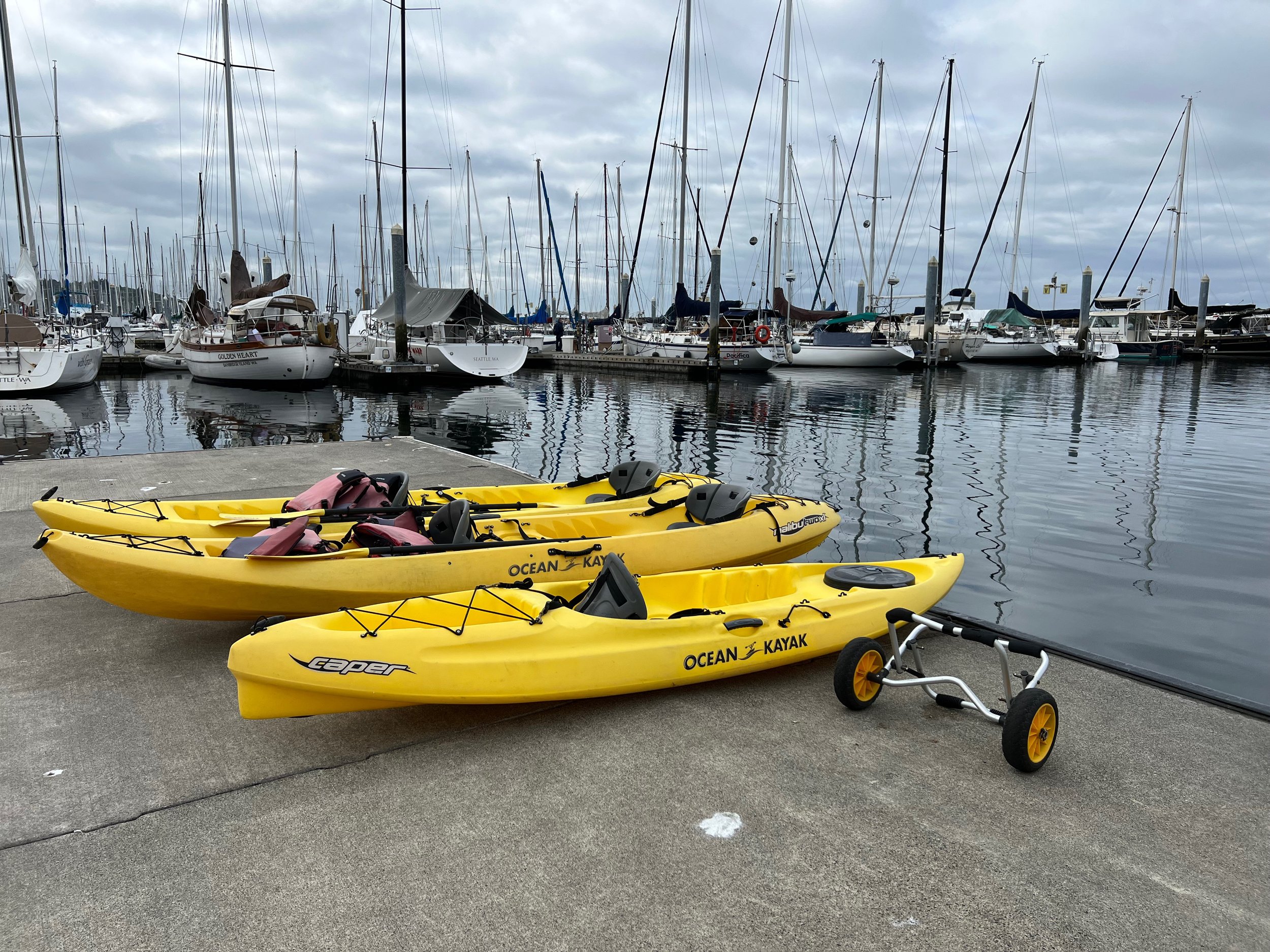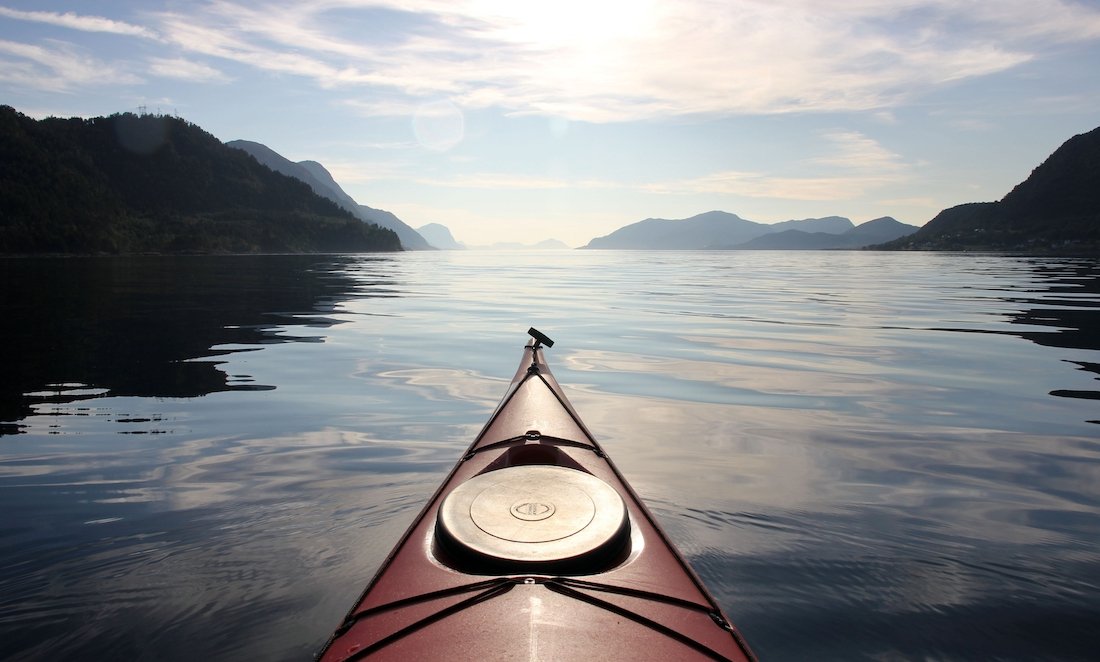How to choose a kayak [The Essential Guide in 2024]
Kayaking is an exciting and exhilarating activity that can offer hours of fun on the water. But before you set out, it’s important to choose the right kayak for your needs.
Whether you plan to take part in flatwater kayaking (our favorite) or more extreme rapid conditions, selecting the most suitable kayak for your skill, interests, and water conditions, will ensure you get maximum enjoyment and safety during your time on the water.
In this guide, we’ll explain all of the key considerations when choosing a kayak so that you can make an informed decision and find a model that meets both your budget and requirements.
We’ll cover topics such as types of kayaks, materials used in construction, features to look for when buying one, safety equipment, and more.
So, let's dive in!
Just a heads-up, this post contains affiliate links that at no additional cost to you, we may earn a small commission.
Types of kayaks
The first step in choosing a kayak is to decide which type you need.
There are three main types: sit-in, sit-on-top, and inflatable.
This photo shows a paddler using a sit-in kayak design
Sit-in kayaks offer more control and stability on the water as they provide protection from the elements and better maneuverability. This type of kayak is suited for fast-flowing rivers, white-water rapids, and are often the kayak of choice for flatwater kayakers as well.
Sit-on-top kayaks are great for leisurely paddling on calm bodies of water. They’re also perfect if you plan to fish or just enjoy a relaxing day out on the lake or ocean, or if you plan to bring along your dog.
Inflatable kayaks are a good choice if you want the convenience of being able to store and transport your kayak with ease. They’re also well suited for smaller bodies of water such as rivers, lakes, and calm water bays.
We would also add that folding kayaks are a newer type of kayak on the market, with most models being a sit-in kayak design. Personally, we’ve been using the Oru Inlet origami folding kayak for two years now.
Usage
When it comes to usage, the type of kayak you choose will depend on what kind of water body and experience you are looking for.
There are three main types of kayaks:
Recreational
Sit-on-top
Touring/expedition
Our Oru Inlet kayak is a folding, “origami” sit-in recreational kayak design. We also use the Oru Paddle accessory for our propulsion.
Recreational kayaks are good for calm lakes or slow-moving rivers, while sit-on-top kayaks are great for beginners who may want to get on/off the kayak often.
Touring or expedition kayaks are designed for longer trips, with plenty of storage space and the ability to track straight in choppy waters.
If you plan on fishing from your kayak, then look for a model that has a built-in rod holder or outfitting for attaching accessories like anchor trolleys or fish finders.
You should also consider the size and weight of the kayak - a longer, heavier kayak will be more stable in open water, but may not be as easy to maneuver in tight spaces.
Also be aware of your state’s laws on kayak permits, as if you have a longer kayak, that may require a permit with your local government.
Propulsion method
When it comes to choosing a kayak, there are two primary propulsion methods: paddling or pedaling.
Paddling is the most common way to propel your kayak, since it has been in use for centuries. It uses either a single-bladed paddle or a double-bladed paddle and relies on the strength of your arms and core. Paddling is best for long-distance trips and can be used in all types of water, from rivers to lakes and oceans.
Many people confuse oars and paddles, so if you’re unsure how these propulsion accessories are different and similar, check out our Oar vs Paddle article for more information.
Using a paddle with a recreational kayak is the type of kayaking that we write about here at Flatwater Kayak Club.
Pedaling is a newer propulsion method that uses an electric motor or a pedal drive system to propel the kayak forward. Pedal drives are popular for anglers who want a hands-free way to get around their favorite fishing spots. They can also be used for recreational paddlers who want a faster and more efficient way to cruise down a river or explore the coast, but we want to note that these aren’t the most environmentally-friendly methods of exploring our water ways.
Pedal drives are typically heavier than paddle-powered kayaks, so they are not ideal for long-distance trips. However, they offer an efficient way to navigate shallow waters or cover longer distances in open water.
Materials used in construction
The material used to construct a kayak is an important factor when it comes to making your decision. There are many materials used, each with its own set of pros and cons.
The most common materials for constructing a kayak include:
Wood: Wooden kayaks have been around for centuries, and offer excellent maneuverability, but are heavier and less durable than other options.
Fiberglass: Fiberglass kayaks have increased in popularity over the years due to their affordability, lighter weight, and good performance. However, they can be more susceptible to damage.
Plastic/Polyethylene: Polyethylene kayaks are often the most affordable option, and are durable and easy to repair. However, they can be heavier than other materials and may not track as well in the water.
Hybrid: Hybrid kayaks are designed with two or more of the above materials, often offering a balance between performance and durability.
Choosing the right material is important, as each option has its advantages and disadvantages. Consider your budget, desired performance, and intended use to determine the best material for you. Additionally, be sure to check the manufacturer’s kayak warranty on any kayak you plan to purchase— some materials may have a longer lifespan than others.
Single Or tandem kayak
When it comes to kayaks, there are two main types: single and tandem.
Tandem kayaks are great for families with children.
Single kayaks are great for solo adventurers who prefer a more private experience. A single kayak is also the best choice for those who want the most control over their speed and direction.
However, if you plan on taking someone along with you (or if you have a large dog that might join you on kayaking) then tandem kayaks are the way to go.
Tandem kayaks come with two seating positions and offer double the paddling power, which makes them ideal for couples or families. Additionally, they’re great for those who want a more social experience while still being able to cover ground quickly.
Depending on your needs, it’s important to consider whether you should go for a single or tandem kayak.
Features to look for when buying a kayak
Once you’ve decided on the type of kayak that is right for your needs, there are certain features to look out for when making the purchase. Some features may not be essential, but can greatly improve your experience and make kayaking a lot easier. We always prioritize safety when we’re looking at kayaks for our own usage.
Seat – Ensuring you have a comfortable seat is a must-have feature if you plan on spending a significant amount of time on the water, or paddling for over an hour or so. Look for seats with adjustable backrests, reclining, and cushioned comfort.
Cockpit – A large kayak cockpit will make getting in and out easier while a small cockpit provides better control, maneuverability, and speed. It all depends on your needs, size, and preferences here, but a roomier cockpit also supports bringing a small dog kayaking.
Stability – A kayak with a wide base and flat hull is more stable and suitable for beginners, while narrow bases and pointed ends are more suitable for speed. Oftentimes when you’re kayak shopping, this will be a key question a sales associate will ask you, which is more important to you, speed or stability?
Safety – Look for safety features like bow-mounted carrying handles for easy rescue, bulkheads that divide the interior of the boat into separate compartments for improved buoyancy, and adjustable foot pegs to maintain body position while paddling.
Accessories – Depending on your needs, some accessories can be essential such as a spray skirt to keep you dry (if you’re kayaking in waves, for example), kayak dry storage bags for carrying gear, and paddles. Of course, we always state that wearing a life jacket is a matter of essential safety when participating in kayaking. We always wear a PFD at all times (even our dog has one).
Weight – Think about how much kayak you can really store, haul, transport. How much do kayaks weigh, you might ask? Well, a lightweight origami folding kayak could be an easy 17 pounds and fold into a nice compact box. But kayaks can weigh over 50 pounds – sometimes as much as 80 pounds – depending on the size, material, and features (such as a two-person tandem kayak).
Technical Aspects of Kayak Design
When you're looking at different kayaks, it's important to consider the technical aspects of their design. Kayaks come in a variety of shapes and sizes, but they all have certain features that make them suitable for different types of paddling.
The length of your kayak is an important factor - longer kayaks tend to have more speed and tracking, while shorter kayaks are easier to maneuver. Look for a length that is suitable for the type of paddling you plan on doing.
The beam (width) of your kayak is also crucial - wider kayaks offer more stability, but they can also be slower than narrower designs. Once again, consider the type of paddling you plan on doing and choose a kayak with an appropriate width.
Another significant aspect is the rocker (curvature) of your kayak - more rocker will make it easier to turn, while less rocker will make it faster but harder to turn. Again, take into consideration the kind of paddling you plan to do when choosing a kayak's rocker.
Types of Water
Once you’ve decided on the type of kayak that you want, it’s time to think about the type of water you plan to explore. Depending on your level of skill and experience, as well as what kind of environment you plan to paddle in, there are several different types of kayaks designed for different kinds of water.
If you plan to kayak in a lake or other flatwater kayaking, you’ll need a stable recreational kayak like the Touring or Inflatable models. These models are great for calm water and even small rapids if you’re feeling adventurous.
We also did a full two-year review on our Oru Inlet sit-in recreational kayak, and found that this folding kayak performs with solid stability on slow-moving rivers and lakes.
If you’re looking to tackle something a little more challenging such as whitewater, sea kayaking, or long-distance touring, you’ll need to look for a more specialized boat (did you see The River Runner on Netflix yet?). Whitewater kayaks are shorter and have pointed bows, which helps them navigate rapids quickly and safely. This is not the type of kayaking that we focus on here at Flatwater Kayak Club, so other reputable resources online can serve you with your research.
Sea kayaks are longer and often wider than recreational models, with enclosed cockpits for safety in choppy seas. Long-distance touring kayaks are typically made from composite materials and have larger storage compartments for extended journeys.
Additional considerations when choosing a kayak
When it comes to selecting a kayak, there are many factors to consider. Here are a few more that could make or break your paddling experience:
Hull Design – Kayaks come in different hull designs, each with its own unique characteristics. A flat-bottomed design is stable and great for beginner paddlers while a V-shaped hull is designed for speed and tracking.
Deck Rigging – Having the right kind of deck rigging can make a big difference in your paddling experience. Look for kayaks with bungee cords, loops, or clips to secure items like water bottles or safety gear.
Comfort Features – When you’re spending several hours in the kayak, comfort can be key. Look for models with adjustable footrests, padded seats, and adjustable backrests for added comfort.
Storage Space – When packing up your kayak, you’ll need to bring along some essential items. Look for models with waterproof storage compartments so you can keep important items safe and dry while you paddle.
Skegs and Rudders – Skegs and rudders help you maneuver your kayak more easily. If you plan on taking long trips, look for models with a skeg, which can help you track straighter in windy or choppy conditions.
Load Capacity – It’s important to consider the weight of your gear when selecting a kayak. Make sure the load capacity is suitable for your needs so that the kayak stays afloat and you don’t end up with too much weight.
Safety Equipment
When you’re out on the water, it’s important to be prepared for any potential emergency. This means investing in safety equipment such as a lifejacket, flares, a whistle, and navigation aids like charts or GPS.
Paddle leashes are also recommended if you decide to paddle alone – this way your paddle won't drift away if you fall in. It’s also a good idea to wear clothing that will keep you warm and comfortable as well as making sure you are alert and aware of your surroundings.
When kayaking in Idaho, Oregon, Washington in the Pacific Northwest region of the United States, it’s important to know about the local regulations for boating and whether or not you need a kayak permit.
Check with your local authorities or marina office to ensure you are compliant with the local laws. It’s also important to be aware of any potential hazards in the area such as debris, rocks, or other obstacles that could cause a problem for your kayak.
By understanding the safety precautions and making sure you have all the necessary equipment, you can enjoy your time out on the water while staying safe. Always make sure you are familiar with the weather conditions, season, and environment before you head out and that you’re only kayaking on routes that match your skill level.
Conclusion
The right kayak for you will depend on your individual needs. You need to consider what type of water you’ll be paddling in, how much storage space you need, and the weight capacity that best fits your body type. You should also think about the size and design of the kayak and whether it is suitable for different conditions.
When you buy a kayak, it’s important not to rush your decision and to think carefully about how you plan to use it. By taking the time to make an informed choice, you’ll ensure that you get a kayak that meets all of your requirements and enables you to enjoy paddling at its fullest.
Happy kayaking!
Discover more great articles from Flatwater Kayak Club, your free online destination for flatwater kayaking in the Pacific Northwest:
Everything you need to know about flatwater kayaking
Affordable gifts for kayakers (that they’ll actually love)
What to wear kayaking in the Pacific Northwest
Is flatwater kayaking good exercise? Try this workout!
Kayak storage: solutions, tips & tricks
Kayak racks: what buyers need to know
Canoe vs Kayak: Differences, pros & cons
Oar vs paddle: 3 key differences to know
Kayaking with a dog [Q&A with celebrity pet trainer Travis Brorsen]













